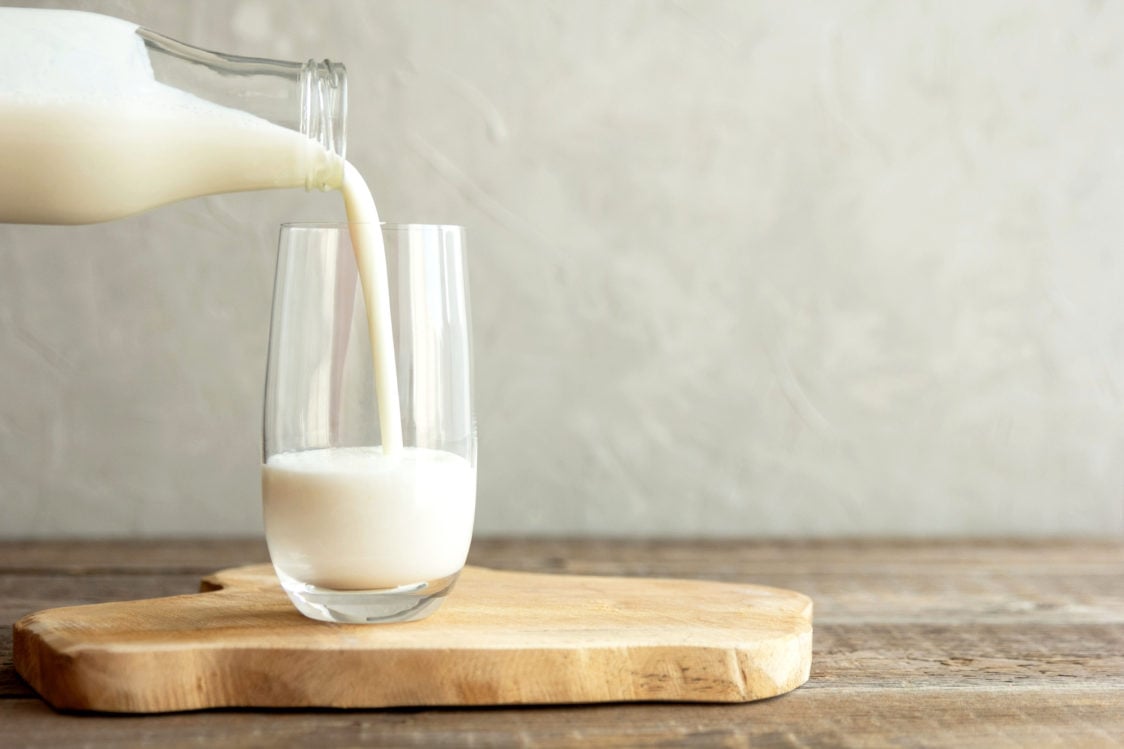Table of Contents
Carbohydrates are, next to proteins and fats, one of the three basic macronutrients in the diet. Despite this, many consider them to be the biggest dietary sin and try to limit their intake. But do you really need carbs in your diet? After all, carbohydrates are part of many processes in the body and at the same time they are also a basic source of energy for the brain and intense sports performance. It is not for nothing that blood sugar circulates in our veins, and there’s also a supply of carbohydrates in our muscles and liver in the form of glycogen. So, are carbohydrates good or bad? In today’s article, we will make it clear.
In the article you will read about these carbohydrates and their functions:
What are carbohydrates?
Carbohydrates have long been known as saccharides or hydrates of carbon. All of these now obsolete synonyms are designations for one of the three basic macronutrients in the diet. The other two are proteins and fats. Carbohydrates are the main source of energy for the body. According to what we know today, they should be a regular part of the diet. The average rational nutrition gets around 50% of energy precisely in the form of carbohydrates. The energy value of 1 g of carbohydrate is 4 kcal (17 kJ).
Carbohydrates are mainly found in plant-based foods such as cereals, legumes, vegetables and fruits. [3]
What types of carbohydrates are there?
There are several types of carbohydrates. The main difference between each type is the length of their chain. The chains consist of individual monosaccharide molecules. You can imagine a carbohydrate as a string with beads strung on it. Each individual bead represents one monosaccharide, i.e. the basic building block of carbohydrates. According to how many of them there are, one can divide carbohydrates into monosaccharides, oligosaccharides and polysaccharides (also called complex carbohydrates).
1. Monosaccharides
Monosaccharides, also referred to as simple sugars, are the simplest form of carbohydrates. They are called simple, because as we mentioned in the example earlier, a monosaccharide is like one single bead. These individual beads are the only form of carbohydrates that can be absorbed from the intestine into the bloodstream and can subsequently be used as a source of energy. All other carbohydrates must first be broken down into individual beads, i.e. monosaccharides, so that they can be processed into energy in the body. [2]
Monosaccharides, i.e. simple sugars, have a sweet taste and serve as a quick source of energy.
The most well-known monosaccharides include:
- Glucose (grape sugar) – is a basic monosaccharide used as an energy source. It is also precisely this form of sugar that circulates in everyone’s blood. Glucose is also what’s talked about when you hear about the blood sugar level (glycaemia).
- Fructose (fruit sugar) – as its name suggests, it is found naturally in fruits, but also, for example, in root vegetables and honey. In its natural sources, it is always found in combination with other monosaccharides, such as glucose.
- Galactose – this monosaccharide is similar in structure to glucose but has a less sweet taste. It is part of the milk sugar – lactose. [2]

How are monosaccharides used in the body?
Since monosaccharides are individual beads, i.e. individual molecules, they cannot be broken down into smaller parts in the intestine. Thanks to the fact that nothing “holds them back”, they pass quickly through the digestive tract and are quickly absorbed into the blood. That’s why they are such a great quick source of energy. They also cause large fluctuations in blood sugar (glycaemia) and it is easier for the body to store them, for example, as fats.
How many monosaccharides should you consume per day?
Due to their rapid absorption, their intake in the diet should be limited. The daily intake of simple sugars, including monosaccharides, should not make up more than 10% of the total energy intake. With a reference intake of 2000 kcal, this represents 50 g, which is roughly 10 sugar cubes.
Where can specific monosaccharides be found?
Source | |
|---|---|
| Glucose | Naturally in fruits, honey and some vegetables, as a part of carbohydrates with longer chains, part of glucose and glucose-fructose syrup (in sweetened foods and drinks) |
| Fructose | Naturally in fruits, honey and some types of vegetables, as a part of classic table sugar (sucrose), part of fructose and glucose-fructose syrups (agave, maple, date, etc.) |
| Galactose | as a part of milk sugar – lactose, fruits and vegetables, cereals, legumes |
2. Oligosaccharides
Oligosaccharides are like strings with 2 to 9 beads. That means that have at least one extra bead compared to monosaccharides. The most well-known ones are disaccharides, which have only two beads. Even these short chains must be broken down into their basic monosaccharide units in the intestine in order to be absorbed into the blood.
Among the most well-known disaccharides are:
- Sucrose (beet and cane sugar) – This is basically the ordinary sugar used for sweetening. It is obtained from sugar beet or sugar cane. In small amounts it is also naturally found in fruits and some types of vegetables. Sucrose consists of glucose and fructose.
- Lactose (milk sugar) – this is a sugar found naturally in milk and milk products. It is composed of glucose and galactose.
- Maltose (malt sugar) – This disaccharide is composed of two glucose molecules. It is produced by the enzymatic hydrolysis of starch. [12]

How are disaccharides used in the body?
Disaccharides are composed of two beads, therefore, unlike monosaccharides, they must be split in the intestine (they are broken down by digestive enzymes). However, since only two beads need to be separated from each other, it is a very fast process. They are absorbed into the blood quickly and act in the body similarly to monosaccharides.
That is why disaccharides are also known as simple sugars. Therefore, when you see the term “sugars” in the nutrition facts table on food labels, it is the content of monosaccharides and disaccharides.
How many disaccharides should you consume per day?
The same recommendation applies to disaccharides as to monosaccharides. Simple sugars, which belong to both groups, should not exceed 10% of the total energy intake.
Where can disaccharides be found?
| Source | |
|---|---|
Sucrose | Sugar beet and sugar cane, table sugar, coconut sugar, panela (rapadura), brown sugar, etc., products with added sugar – confectionery, breakfast cereals, sweetened drinks, soft and long-life pastries, ice cream, sweetened dairy products, etc., fruits and vegetables |
| Lactose | Milk and milk products |
| Maltose | Intermediate product of digestion of polysaccharides, cereals, beer |
And what about other oligosaccharides?
Other oligosaccharides have 3 to 9 beads. Those that are the most important from the nutrition point of view usually cannot be digested and therefore they pass into the large intestine almost unchanged. There they serve as prebiotics, i.e. food for beneficial intestinal bacteria. Examples of these oligosaccharides are, for example, fructooligosaccharides, galactooligosaccharides and others.
Where can oligosaccharides be found?
- Some types of vegetables – onions, garlic, artichokes, cruciferous vegetables (kale, cabbage, broccoli, cauliflower, etc.)
- Some types of fruit – nectarines, raspberries, blueberries, figs, bananas
- Wheat and rye
- Legumes [12]
Bloated stomach, oligosaccharides and legumes. What to do about it?
Legumes, but also cruciferous vegetables, contain oligosaccharides raffinose, stachyose or verbascose. These carbohydrates are the main reason for frequent gas and bloating caused by legumes.

If these problems are bothering you, you might not need to exclude legumes from your diet. It is often enough to soak them for a few hours before cooking, which gets rid of a large part of the oligosaccharides. The water in which they were soaked must then of course be poured out. [2,12]
If this little advice is not enough, or if something other than legumes is causing your bloating, you can find tips on how to get help in our article What Causes Stomach Bloating and How to Get Rid of It?
How are other oligosaccharides used in the body?
Oligosaccharides with 3-9 beads, which don’t have fiber properties, are gradually broken down during passage through the digestive tract and disaccharides and monosaccharides are formed. This process is slower compared to the breakdown of disaccharides, and that’s why they are also absorbed more slowly.
How many oligosaccharides should you consume per day?
There is no exact recommendation for the daily intake of oligosaccharides. That’s why only the overall recommendation for the total amount of carbohydrates in the diet can be applied, which corresponds to 45-60% of the total daily energy intake.
3. Polysaccharides
Can you imagine hundreds to thousands of beads together? Polysaccharides (also called complex carbohydrates) can have such a number of monosaccharide molecules. Polysaccharides include all carbohydrates with 10 or more basic units. Their splitting and absorption into the blood takes the longest time, so they supply the body with energy gradually.
The most well-known polysaccharides include:
- Starch – storage form of carbohydrates in plants
- Glycogen – storage form of carbohydrates stored in the liver and muscles
- Polysaccharides that cannot be digested, known as fibre
Polysaccharides have two basic functions
- They serve as an important storage of energy.
- Starch is the main polysaccharide of plants. It is contained, for example, in cereals, potatoes, legumes, etc. In a regular diet, this complex carbohydrate provides the most energy.
- Glycogen is stored in our muscles and liver. Carbohydrates that are received in the form of food are broken down in the digestive tract and absorbed into the blood. Those that are not used immediately as a source of energy are stored in the form of glycogen or fat.
- Polysaccharides also have a structural function. They are the basic building material of plant cells. In nutrition, these carbohydrates are known as fibre. These include, for example, cellulose, hemicellulose, pectins, etc. However, these carbohydrates cannot be digested and absorbed, because our digestive tract is not sufficiently equipped for this. For example, cows and other ruminants have 4 stomachs and this allows them to completely digest fibre. Despite this, however, fibre has many health benefits. Among the most fundamental ones is the positive effect on digestion and the health of the digestive tract. [2]
What are the sources of carbohydrates/polysaccharides?
You don’t have to go far for sources of polysaccharides. They are found in the most common and available foods, such as:
- Cereals (wheat, rye, rice, corn, oats, barley, etc.)
- Cereal products – bread, pasta, couscous, bulgur, flakes (oat, rye, barley, etc., porridge, and more)
- Pseudocereals (buckwheat, amaranth, quinoa)
- Potatoes
- legumes
- Vegetables
Are you tired of classic sides like rice or pasta? If you want to diversify your diet by using various interesting side dishes, our article How to Replace Regular Wheat Pasta can help you.

How are polysaccharides used in the body?
Separating tens, hundreds or even thousands of beads from each other is a rather lengthy job for digestive enzymes. These strings with beads are gradually divided into shorter sections with 3-9 beads (oligosaccharides). From them, pairs of beads (disaccharides) are formed, which eventually also split, and the result brings monosaccharides, i.e. individual beads. These can pass through the intestinal wall into the blood.
How many polysaccharides should you consume per day?
Polysaccharides should make up the majority of your daily carbohydrate intake. It should range between the mentioned 45-60% of the total daily energy intake.
You might be interested in these products:
What are refined carbohydrates?
You’ve probably come across the term “refined sugar” before, but do “refined carbohydrates” sound familiar to you? These are generally carbohydrate rich foods that are typically highly industrially processed. During the processing, fibre was removed from them and at the same time they also lack many minerals, vitamins and other bioactive compounds. [11]
Refined sugar is the classic sugar that people generally use for sweetening. It is obtained from sugar beet or sugar cane, and a smaller amount of minerals, vitamins and other bioactive substances are removed from it during the gradual processing. The result is a pure mixture of simple sugars.
Examples of refined carbohydrates include:
- White flour pastry
- pastry (croissants, etc.)
- Other white flour products, e.g. regular white pasta
- Regular white sugar and foods or drinks which contain it (various desserts, biscuits and other confectionery, carbonated drinks)
You can read more about sugary drinks and their effect on the body in our article Where Are Liquid Calories Hiding, and How Do These Empty Calories Prevent You from Losing Weight?

Examples of unrefined carbohydrates include:
- Vegetables
- Fruit
- Legumes
- Potatoes
- Whole wheat bread
- Flakes (oat, rye, etc.)
Which carbohydrates are good and which are bad?
Refined carbohydrates are the ones which should be limited, as they lack the already mentioned nutrients. However, it is certainly not true that you should eliminate them from your diet completely. You can treat yourself now and then, but the majority of your diet should be carbohydrate foods containing fibre and micronutrients.
Unrefined carbohydrates should thus be the ones which are consumed the most. These “healthy carbohydrates” preserve their natural content of vitamins, minerals, antioxidants and other bioactive compounds and thus increase the diet quality. In addition, the fibre contained in these foods has a high satiating capacity, which helps prevent hunger and excessive food intake and has many other health benefits.

Metabolism of carbohydrates: how do they act in the body?
Before the “beads” from the carbohydrate-rich food are used as a source of energy or stored, they must pass through the entire digestive tract. There, they are gradually broken down by digestive enzymes, until they form the smallest parts – monosaccharides, which can be absorbed into the bloodstream.
Oral cavity
We will use rice as an example. Rice mainly contains starch, which is a polysaccharide composed of thousands of “beads”. Its digestion process, i.e. cutting the string and separating the beads, starts already in the oral cavity. That’s where the enzyme called salivary amylase begins to break them down. During the short time that the rice spends in the mouth, this enzyme doesn’t manage to do much, but it manages to partially split some polysaccharides into oligosaccharides (strings with 3-10 beads). [3]
Stomach and small intestine
The rice, in its partially digested form, continues into the stomach, where it passes practically unchanged. The most important part of digestion takes place in the small intestine. At this point, pancreatic amylase (an enzyme produced by the pancreas) takes over the digestion of carbohydrates. It “cuts” the connections between the “beads” and thus gradually breaks down polysaccharides into oligosaccharides. Then enzymes stored in the intestinal mucosa take over and break them down to the smallest components, i.e. monosaccharides, which can subsequently be absorbed into the bloodstream. [3]
Target tissues
The result of the breakdown of starch is a large amount of glucose monosaccharide. When glucose is absorbed, blood sugar level (glycemia) rises. If necessary, sugar is moved from the blood to the cells, where it is processed into energy in the form of ATP. Part of the glucose is stored in the form of glycogen in the liver and muscles. The excess energy from carbohydrates can then be converted into storage of fat. [3]

What is the glycemic index?
One of the characteristics of carbohydrate-rich foods is their glycaemic index value. It tells us how quickly a certain food is absorbed from the intestine into the blood. The glycaemic index specifies how quickly the blood sugar level (glycaemia) rises after consuming the given food.
Glycaemic index values range from 1 to 100. The higher the glycaemic index of the food, the faster the glycaemia increases after eating the given food. On the other hand, foods with a low glycaemic index, cause a slow rise in glycaemia.
In general, the shorter the carbohydrate chain (fewer beads), the faster it is broken down and absorbed into the blood. However, when talking about the glycaemic index of foods, it is not so simple, because food contains a mixture of different carbohydrates, a mixture of different nutrients and is processed in different ways. All these factors affect the final value of the glycaemic index.
Let’s take an example. Apples are sweet. They contain quickly absorbable simple sugars (monosaccharides and disaccharides). Naturally, you’d expect them to have a high glycaemic index. In reality, the apples’ GI value is relatively low, about 36. The reason is mainly the fibre content, which slows down the absorption of sugars. On the other hand, white bread, which contains polysaccharides, has a GI value of about 75, which is a relatively high number. This is because it doesn’t contain fibre, which slows down the rise of sugar in the blood.
What is the glycemic index of some foods?
1. High glycemic index
Food | |
|---|---|
| White rice | 73 |
| White bread | 75 |
| Cornflakes | 81 |
| Watermelon | 76 |
| Bananas | 51 |
2. Low glycemic index
Food | |
|---|---|
| Barley | 28 |
| Whole grain pasta | 48 |
| Oranges | 43 |
| Carrots | 39 |
| Beans | 24 |
What is glycemic load?
It is also important to know that the blood sugar level after a meal depends not only on the type of carbohydrates in the food, but also on their content in the food and the amount consumed. Simply put, the more carbohydrates you eat, the more your blood sugar levels rise.
For example, a small amount of white bread, which has a high glycaemic index, may ultimately raise your blood sugar less than a few pieces of apples with a low glycaemic index. [2]
Functions of carbohydrates in the human body
1. They provide energy for the body and sports performance
Carbohydrates, especially in the form of glucose, are the basic source of energy for the body. For some organs and cells, they are the predominant or even the only source of energy. That’s why the body has mechanisms by which it can convert other nutrients into them if necessary. Carbohydrates are a basic source of energy for red blood cells, bone marrow or the brain. The brain consumes up to 130 g of glucose per day. [2,8]
Glucose is the main source of energy for working muscles. When moving, the muscles obtain glucose from the blood or from stored muscle glycogen. Muscle glycogen is the only nutrient that can be used by muscle cells to generate energy even without access to oxygen. Therefore, this source of energy is mainly used during intense sports performance. [4]

2. They store energy
The body can store the excess amount of glucose in the form of fat and glycogen. It is located in the liver or in the muscles, where it sits and waits for later use. The liver can store up to around 100 g of glycogen. If the blood sugar level drops, the liver provides its reserves and replenishes the amount of sugar in the blood.
Unlike the universal “liver” glycogen, the glycogen reserves in the muscles can only be used in the place of their storage, i.e. in the muscle cells. This reserve ensures the supply of energy, for example, during sports activities with more intense repetitions. Up to approximately 500 g of glycogen can be stored in the muscles. However, its amount varies and depends, for example, on the amount of muscle mass and the form of the athlete. [10]
3. They serve as a building material
Carbohydrates are part of many tissues and molecules necessary for the functioning of the body. They are found, for example, in glycolipids, which are absolutely necessary for the correct composition of cell membranes. They are also a component of glycoproteins, which are important for the cartilages and joints. Carbohydrates are also part of the DNA molecule, which is important for the development and functioning of the organism.
4. They help maintain muscle mass
The body can make glucose from other sources if needed. When the organism (especially the brain) doesn’t have a sufficient supply of glucose from food or stored glycogen, it can use non-carbohydrate sources, from which the so-called Gluconeogenesis creates glucose. One of these sources are amino acids, which make up the proteins that create muscle mass. Insufficient intake of carbohydrates can thus promote the conversion of amino acids into glucose, which is subsequently used as a source of energy.
However, when the intake of carbohydrates is sufficient, the body doesn’t have to use backup methods of glucose production. Carbohydrates can thus support the maintenance of the amount of muscle mass. [13]
Carbohydrates also take part in many important processes, including the process of regeneration of muscle proteins. They are an important source of energy. However, the basis of these processes is, of course, sufficient protein intake.
5. They support the health of the digestive tract
The already mentioned fibre is the most important carbohydrate for the digestive tract. It is not broken down during digestion, but passes through the digestive tract essentially unchanged.
Insoluble fibre, which binds water along the way and increases its volume, accelerates the passage of digested contents through the intestine and thus facilitates excretion.
Soluble fibre partially dissolves in the intestine. Because of this, it swells up and acquires a gel consistency, which helps to increase the feeling of satiety or, for example, reduce the absorption of sugar in the blood. In the large intestine, it then serves as food for beneficial intestinal bacteria. Thanks to that, they can create substances that subsequently improve the health of the intestinal wall. [2]
If you are interested in more comprehensive information about the effects, function and sources of fibre, check out our article Dietary Fibre. Why Is It Important and What Are Its Sources?

How many carbohydrates should you consume per day?
According to EFSA (European Food Safety Authority) recommendations, carbohydrates should make up 45-60% of our total daily energy intake. With a reference intake of 2000 kcal, this represents 225-300 g of carbohydrates.
The lower amount of 220 g could look like this:
- 50 g of oatmeal
- 110 g of banana
- 80 g of mandarin orange
- 3 crispbreads
- 70 g of rice (raw)
- 100 g of rye bread
- 60 g lentils (raw)
Complex carbohydrates (polysaccharides) should be predominate in the diet. Simple sugars should not make up more than 10% of total energy intake, which is 50 g at the given reference intake.
As for fibre, you should get at least 25 g of it per day. EFSA recommends exactly 25 g, while Dietary Guidelines for America indicate 25-35 g. [3,7]
However, the optimal intake of carbohydrates can vary based on several factors, such as the level of physical activity, type of sports activity, health condition, etc.

Why should complex carbohydrates with fibre content be predominant?
Complex carbohydrates are digested and absorbed more slowly than simple carbohydrates. As a result, they remain in the digestive tract for a longer time and the energy from them is supplied to the body gradually. The fibre content significantly increases their ability to satiate and prevent hunger. As a result, thanks to the long-lasting satiety, you don’t have to eat more food than necessary.
In addition, there are also no fluctuations in blood sugar level, which are usually caused by the consumption of simple sugars. Fluctuations in glycaemia are, among other things, often associated with increased cravings for sweets or a feeling of not being sufficiently energised.
Is it good to have a low-carb diet?
A low-carb diet is perhaps one of the most popular ways of eating used not only for weight loss. However, it’s interesting that it is not precisely defined what exactly should be imagined under “low” carbohydrate intake. Generally speaking anything between 10-45% of the total energy intake (TEI), is considered to be a low-carb diet.
One way of breaking down low-carb diets through the eyes of science
- Moderately low-carb diets: 26-40% TEI from carbohydrates
- Low-carb, high-fat diets: 10-25% TEI from carbohydrates
- Ketogenic diets: below 10% TEI from carbohydrates [6]
There are quite a few studies devoted to this topic, and so far the prevailing view is that a low-carb diet is not a miracle path to better health or to the dream body. Successful weight loss can be the result of both a balanced nutrient intake and a low carbohydrate intake. However, the condition for losing weight is that the body must be in a caloric deficit.
It appears that reduced carbohydrate intake can help stabilize blood sugar levels in patients with diabetes. However, it is very individual, because a patient suffering from this disease can achieve good levels of glycaemia even with a normal diet.
There are people who are comfortable with limiting carbohydrates in their diet, and then there are the majority for whom it is not a sustainable way of eating long-term. In any case, it’s true that it’s very individual and if someone decides to go in this direction, they should monitor the possible side effects of a diet with a reduced amount of carbohydrates. [5]
The article Low-Carb vs. Low-Fat: Which Is Better for Losing Weight?
What are the risks of a low-carb diet?
- Digestive issues, especially constipation, due to low fibre intake
- Fatigue, headaches, weakness
- Increased level of cholesterol or triacylglycerols associated with higher fat intake
- Lack of vitamins and minerals

Do carbohydrates make you gain weight?
There is still a fairly widespread opinion that if you have bread, potatoes, pasta and other carbohydrate-rich foods in your diet, you are paving your way to overweight and obesity. Although it is easy to believe at first glance, it’s not true. Although overweight people often have an excessive amount of carbohydrates in their diet, it is not the carbohydrates themselves that cause the weight gain. Body stores fat and weight gain occurs when total energy intake from food is higher than energy expenditure.
Just like carbohydrates, fats and proteins are converted into energy in the body. When there is an excess of any of these nutrients, weight gain can occur. [2]
How to get enough of the right sources of carbohydrates?
- Choose carbohydrate foods rich in fibre, such as whole grains, legumes, vegetables, and fruits.
- Replace white bread or pasta with whole grains. Instead of classic white rice, try, for example, natural rice.
- Include pseudocereals in your diet. These include quinoa, amaranth or buckwheat.
- Don’t quit potatoes. They are a great source of fibre and even vitamin C. And rice, for example, has twice the amount of energy than cooked potatoes.
- Don’t forget about porridge and oats. They don’t have to be only a breakfast food.
- Treat yourself to at least two servings of legumes per week.
- Eat at least 400 g of vegetables and fruits per day, whilst the amount of vegetables should be slightly bigger.
- Limit simple sugars.
Carbohydrates in food: which sources are the best and which ones to limit?
Good | Bad |
|---|---|
| whole wheat bread, rye bread, whole grain pasta, whole grain flour, pseudocereals (buckwheat, quinoa, amaranth), flakes (oat, rye, buckwheat, barley…), vegetables, fruits, legumes | confectionery, soft pastries (croissants, cakes, doughnuts, etc.), sweetened instant oatmeals, breakfast cereals (especially sweetened ones), carbonated drinks, white flour pastries (white rolls, white toast, French baguette, etc.) |
What is should you remember?
As one of the three basic macronutrients, carbohydrates play an important role in the diet. They are a basic source of energy and many vital processes in the body work properly only thanks to them. However, in order to use them in your advantage as much as possible, you must make sure you select them correctly. The majority of the intake of carbohydrate foods should be those that contain complex carbohydrates and at the same time are rich in fibre, i.e. whole grain products, legumes and vegetables. On the other hand, you should limit foods with a high content of simple sugars.
If you liked the article, feel free to share it with your friends.
[1] ATKINSON, F.S. et al. International Tables of Glycemic Index and Glycemic Load Values: 2008. – https://doi.org/10.2337/dc08-1239
[2] DUYFF, R.L. Complete Food & Nutrition Guide. . New York: Academy of Nutrition and Dietetics, 2017. ISBN 978-0-544-52058-5.
[3] EFSA PANEL ON DIETETIC PRODUCTS, NUTRITION, AND ALLERGIES (NDA) Scientific Opinion on Dietary Reference Values for carbohydrates and dietary fibre. – https://onlinelibrary.wiley.com/doi/abs/10.2903/j.efsa.2010.1462
[4] HARGREAVES, M. - SPRIET, L.L. Skeletal muscle energy metabolism during exercise. – https://www.nature.com/articles/s42255-020-0251-4
[5] NAUDE, C.E. et al. Low‐carbohydrate versus balanced‐carbohydrate diets for reducing weight and cardiovascular risk.– https://www.ncbi.nlm.nih.gov/pmc/articles/PMC8795871/
[6] NOAKES, T.D. - WINDT, J. Evidence that supports the prescription of low-carbohydrate high-fat diets: a narrative review. – https://bjsm.bmj.com/content/51/2/133
[7] Dietary Guidelines for Americans, 2020-2025.– https://www.dietaryguidelines.gov/sites/default/files/2020-12/Dietary_Guidelines_for_Americans_2020-2025.pdf
[8] Glucose and The Brain: Improving Mental Performance. – https://www.eufic.org/en/whats-in-food/article/glucose-and-mental-performance
[9] Glycemic index for 60+ foods. In Harvard Health. – https://www.health.harvard.edu/diseases-and-conditions/glycemic-index-and-glycemic-load-for-100-foods
[10] Glycogen Research Analysis. – https://examine.com/outcomes/glycogen-content/
[11] Good Carbs, Bad Carbs . How to Make the Right Choices.– https://www.healthline.com/nutrition/good-carbs-bad-carbs
[12] The Functions of Carbohydrates in the Body. – https://www.eufic.org/en/whats-in-food/article/the-basics-carbohydrates
[13] What Are the Key Functions of Carbohydrates? – https://www.healthline.com/nutrition/carbohydrate-functions

